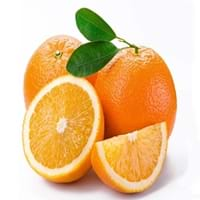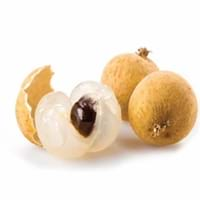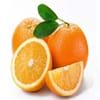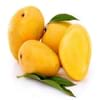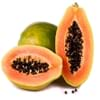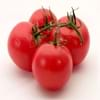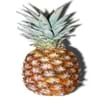Health Benefits
Arthritis treatment, Cancer prevention, Increases metabolic rate, Kidney stone treatment, Lower blood pressure, Prevents constipation, Prevents diabetes, Strengthening of bones, Ulcer treatment, Weight loss properties
Anti depressant, Anti-inflammatory properties, Healthy mucus membrane, prevents oral cavity cancer, Prevents anemia, Prevents cases of morning sickness, Prevents lung cancer, Skin rejuvenation, Treatment of colonic diseases
General Benefits
Boosts immune system, Controls blood pressure, Digestive aid, Improves eye vision, Maintains healthy cholesterol level
Anti oxidant properties, Anti-inflammatory properties, Digestive aid, Gives you energy, Suppresses Arthritis
Skin Benefits
Anti-aging benefits, Brightens and lightens complexion, Hydrates skin, Skin rejuvenation, Treatment of acne, Treatment of dark spots
Reduces wrinkles, Skin rejuvenation
Hair Benefits
Good conditioner, Prevents hair loss, Regulates hair growth, Treatment of dandruff
Not Available
Allergy Symptoms
Abdominal pains, Breathing difficulty, Coughing, Diarrhea, Drop in blood pressure, Fainting, Runny nose, Skin rash, Sneezing, Swelling of mouth, tongue or lips, Vomiting
Itching, Swelling of mouth, tongue or lips, Tingling sensation in mouth
Side Effects
Abdominal cramps, Diarrhoea, Weight gain
Mouth irritation, Weight gain
Best Time to Eat
As a snack in the late afternoon, Don't consume at night and before bed, Eat the fresh ones, avoid mixing with any other foods, don't eat after meal., Morning time (before lunch), Strictly avoid empty stomach
As a snack in the late afternoon
Vitamin B5 (Pantothenic Acid)
Vitamin C (Ascorbic Acid)
Vitamin E (Tocopherole)
Not Available
Vitamin K (Phyllochinone)
Not Available
Lutein+Zeaxanthin
Not Available
Calories in Fresh Fruit with Peel
Calories in Fresh Fruit without Peel
Not Available
Calories in Frozen Form
Not Available
Calories in Dried Form
Not Available
Calories in Canned Form
Not Available
Calories in Jam
Not Available
Type
Citrus
Tree fruit, Tropical
Season
Winter
Mid to late summer
Varieties
Sweet Orange - Persian orange, Navel orange, Valencia orange and Blood orange. Sour Orange - Seville orange, Bergamot orange, Chinotto orange and Daidai.
Chompoo Longan, Kohala Seedling, Haew, Edau and Biew Kiew
Seedless Variety
Yes
Not Available
Inside Color
Orange
Yellowish brown
Taste
Sweet-Sour
Sweetish
Origin
South-Eastern Asia
Mexico
Soil Type
Loam, Sandy loam
Well-drained
Climatic Conditions
Hot
Sunny, Warm, Without frosts
Facts about
- There are around 600 varieties of oranges available worldwide.
- More than 1 plant can grow from a single orange seed.
- Orange and orange blossoms are a symbol of love.
- Orange tree is usually propagated by grafting.
- Longan is also called as "Dragon's eye" in China as it gives an impression of an eyeball.
- Longan seeds can be used to absorb the venom after the snake bite and they also help to stop bleeding.
Top Producer
Brazil
Thailand
Other Countries
China, Egypt, India, Italy, Mexico, South Africa, Spain, Turkey, United States of America
Australia, Combodia, Taiwan, United States of America, Vietnam
Top Importer
Germany
China
Top Exporter
Spain
Thailand
Botanical Name
Citrus sinensis
Dimocarpus longan
Synonym
Citrus aurantium L. var. dulcis
Dragon eye
Subkingdom
Tracheobionta
Viridiplantae
Division
Magnoliophyta
Tracheophyta
Class
Magnoliopsida
Magnoliopsida
Order
Sapindales
Sapindales
Family
Rutaceae
Sapindaceae
Species
C. × sinensis
D. longan
Generic Group
Citrus fruit
Not Available
Difference Between Orange and Longan
We might think that Orange and Longan are similar with respect to nutritional value and health benefits. But the nutrient content of both fruits is different. Orange and Longan Facts such as their taste, shape, color, and size are also distinct. The difference between Orange and Longan is explained here.
The amount of calories in 100 gm of fresh Orange and Longan with peel is 63.00 kcal and 83.00 kcal and the amount of calories without peel is 47.00 kcal and Not Available respectively. Thus, Orange and Longan belong to and category.These fruits might or might not differ with respect to their scientific classification. The order of Orange and Longan is Sapindales and Sapindales respectively. Orange belongs to Rutaceae family and Longan belongs to Sapindaceae family. Orange belongs to Citrus genus of C. × sinensis species and Longan belongs to Dimocarpus genus of D. longan species. Beings plants, both fruits belong to Plantae Kingdom.
